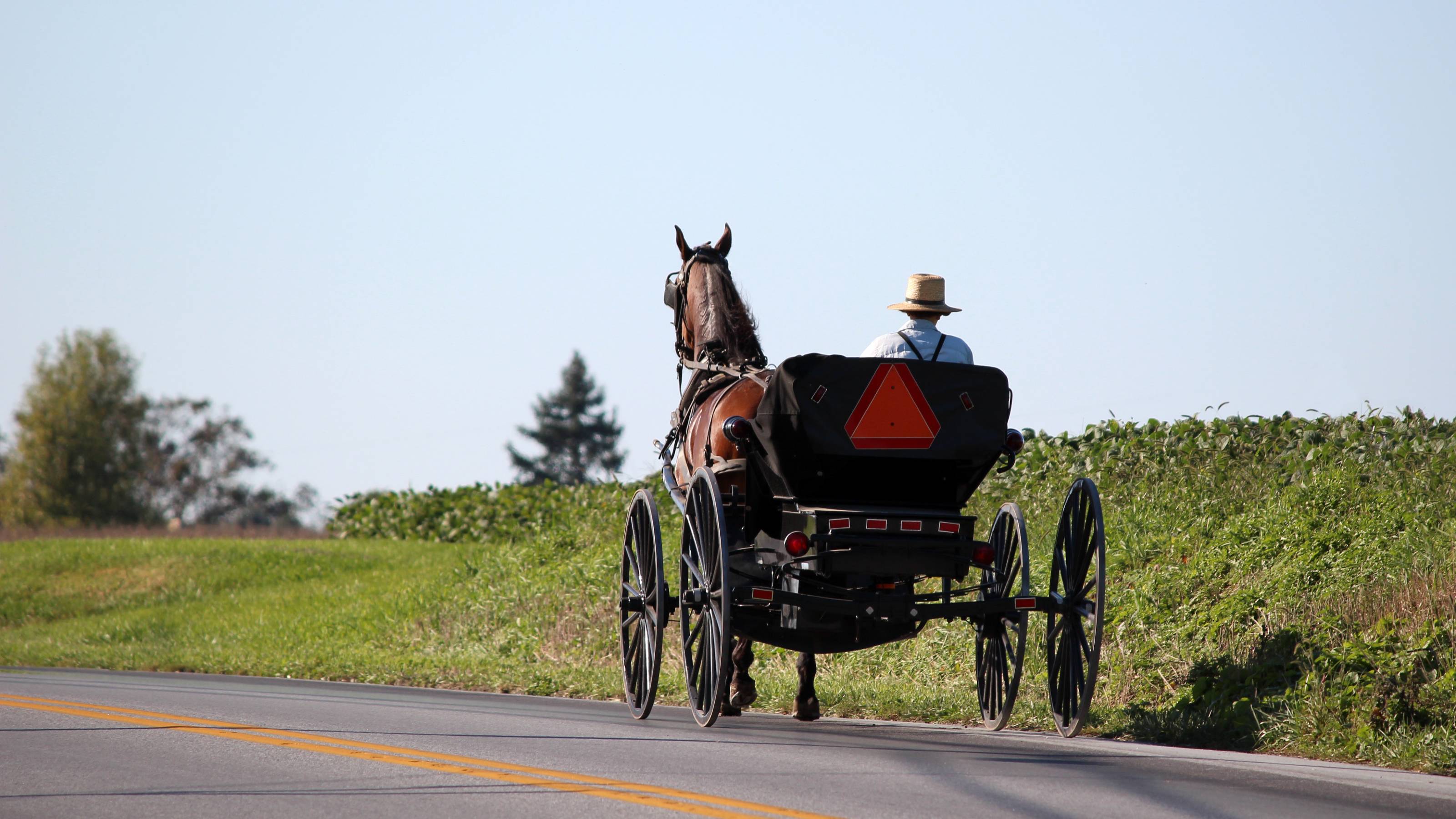10 Cheapest Small Towns to Live In
The cheapest small towns might not be for everyone, but their charms can make them the best places to live for plenty of folks.

Charlotte Gorbold
The cheapest small towns to live in aren't for everyone. True, small-town living has plenty of perks: light traffic, a strong sense of community and a slower pace of life. Perhaps best of all, there's the cost of living, which typically is cheaper in small towns than in expensive big cities.
To get a sense of what inexpensive small-town living really costs, we compiled a list of the 10 cheapest small towns to live in America, with small towns defined as places with populations of approximately 10,000 to 50,000 people.
We compiled our rankings based on the Council for Community and Economic Research's (C2ER) calculations of living expenses in 265 urban areas. C2ER's Cost of Living Index measures prices for housing, groceries, utilities, transportation, healthcare, and miscellaneous goods and services, such as going to a movie or getting your hair done at a salon.

Sign up for Kiplinger’s Free E-Newsletters
Profit and prosper with the best of expert advice on investing, taxes, retirement, personal finance and more - straight to your e-mail.
Profit and prosper with the best of expert advice - straight to your e-mail.
The data, which sorts through thousands of prices in hundreds of cities, allowed us to pinpoint the small towns with the absolute lowest living costs. (For larger urban areas, be sure to read our list of the 25 Cheapest Places to Live: U.S. Cities Edition).
It goes without saying that you should weigh the pros and cons before you pack up and relocate to one of the 10 cheapest small towns in America. While a low cost of living is attractive, it can be offset by issues such as scarce jobs, small paychecks or a lack of things to do in the area. Plan an extended visit to ensure the small town fits your lifestyle. And in a tight real estate market, consider all your options, even buying a foreclosed home.
And so, without further ado, here are the 10 cheapest small towns to live in the U.S.
Disclaimer
Source: C2ER's Cost of Living Index, 2024 Annual Average Data, published October 2024. Index data is based on average prices of goods and services collected during the third quarter of 2024, with index values based on the new weights for 2024. Population data, household incomes, home values, poverty rates and other demographic information are from the U.S. Census Bureau. Local unemployment rates, courtesy of the YCharts are not seasonally adjusted, and are as of January 16, 2025 for the month of November 2024, which is the latest available final data.

10. Hutchinson, Kansas
- Cost of living: 12.4% below U.S. average
- Population: 39,837
- Median household income: $58,801 (U.S.: $80,610)
- Median home price: $452,500 (U.S.: $520,771)
- Unemployment rate: 3.6% (U.S.: 4.1%)
When you’re deicing your driveway with salt, you’re probably not asking yourself where it was mined, but the answer might surprise you. In the U.S. there’s a chance it comes from the Midwest — Hutchinson, Kansas, to be precise.
This unassuming town, with a little over 40,000 residents, dates back to 1871, when frontiersman Clinton “C.C.” Hutchinson established a town at the Santa Fe railroad’s crossing over the Arkansas River. But it was Ben Blanchard, a land speculator, who really hit the jackpot a few years later. When drilling for oil, Blanchard discovered the area’s rich salt deposits. Known as “white gold,” the mineral was vital for food preservation in the days before refrigeration. Salt mining became a major industry in the town and is still going strong, owing to its importance for agriculture and snow removal.
Ironically, Hutchinson doesn't get much snow. The snowy period of the year lasts for 4.4 months, from November to March, with its peak in December. It has an average snowfall of 2.9 inches.
The business’s success reflects the bigger picture in Kansas, which remains slightly above the national average in terms of the proportion of employees in manufacturing. Other large employers in the Hutchinson area include Siemens (wind turbine components), Kuhn Krause (agricultural machinery and parts), Sonoco (packaging) and Morton Salt.
In this urban rural community, life can be as quiet or as busy as you want to make it. Outdoors types will enjoy the surrounding scenery, bike and hiking trails and protected open spaces including Dillon Nature Center. Hutchinson is home to the world-renowned Prairie Dunes Country Club and golf course (founded in the 1930s by, yes, a salt tycoon), while families will enjoy the annual Kansas State Fair, the Cosmosphere space museum and the Strataca underground salt museum, naturally.
Buying a home in Hutchinson is a bargain at almost 25% below the national average, but it comes with a "relatively high" risk of experiencing tornadoes, according to FEMA. Grocery and transportation expenses aren't as much of a bargain, offering a savings of 4.3% and 1.2% respectively. Healthcare expenses are 13.4% lower than the national average.
Downtown is a hub for community events, shopping, dining and entertainment. Public investment has redeveloped the area, and further improvements will include public green spaces, a river walk, amphitheater and water spray park. Uptown, you’ll find more shopping and the beautifully renovated B&B Theaters.
If you feel the need for the bright lights of a big city, you’re an hour’s drive from Wichita and around three hours from Kansas City.
Kansas recently enacted a number of tax cuts including a repeal of its tax on Social Security benefits. However, it continues to tax income from private retirement plans, IRAs, and 401(ks)s. Retirees can plan on passing on more of their wealth because there is no estate tax or inheritance tax in Kansas.

9. Dalton, Georgia
- Cost of living: 12.4% below U.S. average
- Population: 34,402
- Median household income: $61,236
- Median home price: $317,213
- Unemployment rate: 4.4%
Woodland Indians and Creek Nation initially held the area of present-day Dalton, Georgia. The first recorded European in the area was Spanish explorer Hernando de Soto. Dalton is the county seat of Whitfield County. The U.S. government recently declared Dalton and Whitfield County to have more intact Civil War artifacts than any other place in the country.
Revitalization of the pre-Civil War-era craft of candlewick fabric gave rise to a cottage chenille bedspread industry. A stretch of highway passing through Whitfield County became known colloquially as "Peacock Alley" in reference to one of the most common patterns depicted on the bedspreads. The bedspread business boomed to a multimillion-dollar industry by the 1950s and eventually gave way to the carpet industry.
Dalton is home to many of the nation's floor-covering manufacturers, primarily those producing carpet, rugs, and vinyl flooring. Dalton is often referred to as the "Carpet Capital of the World," home to over 150 carpet plants. The industry employs more than 30,000 people in the Whitfield County area. More than 90% of the functional carpet produced in the world today is made within a 65-mile radius of the Dalton.
Furnishing your home in Dalton is easy with the abundance of local carpet and textile makers. Housing is almost 30% lower than the national average. Home prices are over $203,558 cheaper and rent is $279 lower than what most people pay. Utilities are a relative bargain at about 12% less than average.
In 2024, Georgia moved to a flat personal income tax with a rate of 5.49%. Georgia taxes most retirement income, except Social Security benefits, but the state offers a hefty retirement income exclusion. And retirees should take note that there are no estate or inheritance taxes in Georgia.

8. Morristown Tennessee
- Cost of living: 12.6%
- Population: 30,983
- Median household income: $44,811
- Median home price: $383,902
- Unemployment rate: 3.5%
Morristown is a city in and the county seat of Hamblen County, and is centrally located between eight counties. This location allows Morristown to be the regional hub for employment, shopping, recreation, healthcare and educational opportunities in the area. The city lies within the Ridge and Valley of the Appalachians and is considered part of a region known as the "Lakeway Area," consisting of a land area surrounding Cherokee and Douglas lakes.
The Cherokee’s 400 miles of shoreline is dotted with a variety of public access areas, county and municipal parks, commercial boat docks, Panther Creek State Park, and a state wildlife management area. And, with a temperate climate, anglers can enjoy fishing nearly every day of the year. So, grab your rod, boat, kayak or canoe and set sail for a fun day on the water at Cherokee Lake. With over 400 miles of shoreline, beautiful Cherokee Lake, a fisherman’s haven, was recently ranked No. 12 on BASSMASTERS’ list of 100 Best Bass Lakes in the United States.
Tennessee is one of the few states to earn a spot on Kiplinger’s 10 Most Tax-Friendly States for Retirees and Best States for Middle-Class Families Who Hate Paying Taxes. It may be no surprise that the cost of living in Morristown is easy on your pockets. Housing and transportation costs are well below average coming in at 25.5% and 18.3% less than the mean.
There is plenty of free entertainment in the summer. The Downtown Green located in Morristown’s historic district is the home of a monthly summer concert series as well as the popular Morristown Craft Beer Festival, held on the fourth Saturday in September. And if you prefer to indulge in some wine, you’ll pay 7% more for the vino.
If you need one more reason to get outside, the city boasts four championship disc golf courses, which has made it the premier destination in Tennessee for competitors of all skill levels. If yoga is more your speed, you are in luck. Classes are a whopping 53% cheaper than average. Your Zen comes at a heavily discounted price.

7. Dublin, Georgia
- Cost of living: 12.9% below U.S. average
- Population: 16,023
- Median household income: $40,417
- Median home price: $342,450
- Unemployment rate: 3.8%
Tiny Dublin, Georgia, punches well above its population-size weight. This town situated about halfway between Atlanta and Savannah hosts three institutions of higher education (Georgia Military College, Oconee Fall Line Technical College and Middle Georgia State University all have campuses there), a Veterans Administration Medical Center, and two nationally recognized historic districts.
Whether residents buy or rent, expenses related to keeping a roof over one's head are 28.3% lower than the U.S. average. The average price of a house in Dublin stands at $342,450, per C2ER, as opposed to $520,771 nationally. That represents a savings of 34.3%. Rents, meanwhile, are cheaper by 51.1%.
Locals catch breaks on everything from groceries to transportation to utilities to miscellaneous goods and services, as well. A trip to the doctor averages $103.33, vs more than $144,87 for the U.S. as a whole. You'll save 60% taking a yoga class, 53.6% getting a haircut and prescription drugs cost almost 22% more.
And in a special break for Dublin's senior citizens, Georgia happens to be one of the more tax-friendly states for retirees.
Sadly, too many of Dublin's residents struggle despite its low costs of living. The town's poverty rate is 35.1% and that's more than double the Georgia state poverty rate.

6. Muskogee, Oklahoma
- Cost of living: 16.1% below U.S. average
- Population: 36,819
- Median household income: $48,735
- Median home price: $347,667
- Unemployment rate: 3.9%
Muskogee packs a lot of history, culture and higher education into a pint-sized package.
Located about 50 miles southeast of Tulsa, the town traces its roots back to 1817. It's home to four institutions of higher learning, as well as the Oklahoma School for the Blind. Jim Thorpe – All-American, the 1951 film starring Burt Lancaster, was shot on the campus of what was then known as the Bacone Indian University in Muskogee. The town also boasts six museums and the Oklahoma Music Hall of Fame.
And let's not forget what is arguably the town's most famous appearance in popular culture: Merle Haggard's hit song "Okie from Muskogee," which became an emblem of Vietnam-era America.
Today, the area's employers include the U.S. Department of Veterans Affairs, a VA medical center and paper company Georgia-Pacific.
But what really puts Muskogee on the map is its ultra-low cost of living. The biggest break comes from housing-related expenses, which are 33.2% lower than the national average, according to C2ER's Cost of Living Index. Healthcare is notably cheaper, too. Costs are almost 15% lower than most Americans pay.

5. Salina, Kansas
- Cost of living: 17.1% below U.S. average
- Population: 46,432
- Median household income: $60,624
- Median home price: $355,200
- Unemployment rate: 3%
The small town of Salina sits at the intersection of Interstates 70 and 135, about 90 miles north of Wichita and 175 miles west of Kansas City.
Manufacturing and healthcare are among the town's most important industries. Major employers include Schwan's Company, the maker of Tony's frozen pizza; Great Plains Manufacturing, which serves the agricultural industry; and the Salina Regional Health Center. Salina is also home to several institutions of higher education, including the University of Kansas School of Medicine Salina Campus and Kansas State University Polytechnic Campus.
Salina's economic mix has proven adept at delivering both low unemployment and low living costs. Housing expenses come in at roughly two-thirds of the national average, according to C2ER. Transportation is cheaper too, running about 8% less than the national average.
Locals catch breaks in lots of other ways, too. Groceries and miscellaneous goods and services all cost less than the national averages. Utilities is the outlier and is 2.3% above the national average.
On the other hand, taxes are somewhat burdensome statewide. In fact, Kiplinger's Kansas State Tax Guide rates it as one of the least tax-friendly states for middle-class families, largely because of a high sales tax. Kansas is one of the nine states that tax Social Security retirement benefits.

4. Ponca City, Oklahoma
- Cost of living: 17.3% below U.S. average
- Population: 24,377
- Median household income: $55,270
- Median home price: $390,000
- Unemployment rate: 3.3%
Ponca City traces its lineage back to the days of the Land Run of 1893, when pioneers decided to build a town in north-central Oklahoma near the Arkansas River and a freshwater spring.
Not long after its founding, enterprising oil men successfully drilled wells in the area, and Ponca City remains an oil town to this day. Some of the area's largest employers include energy firms such as Schlumberger (SLB), ConocoPhillips (COP) and Phillips 66 (PSX).
Local attractions include the Marland Mansion, which was built by oil baron E.W. Marland in the early 20th century. It's now a museum. Dedicated in 1930, the Pioneer Woman Statute, a 30-foot-tall monument of a pioneer woman holding a young child, is also not to be missed.
Household incomes are well below the national median, but housing is a heck of a deal. The median price of a Ponca City home is just $390,000. Nationally, it's $520,771. Indeed, total housing costs are roughly just two-thirds of what the average American pays, according to C2ER's Cost of Living Index. Residents also catch a break on all manner of miscellaneous goods and services, which are are 18.5% lower than the national average. The discount on healthcare is 11.6% and groceries are a smidge cheaper at 6% below the national average.
Although it's among the cheapest small towns in America, Ponca City's low costs of living do come at a cost: The town sits pretty much smack dab in the middle of Tornado Alley.

3. Richmond, Indiana
- Cost of living: 17.4% below U.S. average
- Population: 35,551
- Median household income: $46,395
- Median home price: $325,000
- Unemployment rate: 5.5%
Few cities of any size can claim Richmond's place in the early history of recorded jazz. Some of the first jazz records were made in this small town, featuring greats such as Hoagy Carmichael, Duke Ellington and Louis Armstrong. There's a Walk of Fame celebrating jazz and other artists who recorded with Richmond's Gennett Records.
While jazz will always be part of its history, today's Richmond, which is an hour's drive west from Dayton, Ohio, is known more for its colleges and seminaries. They include Indiana University East, the Earlham School of Religion (part of Quaker-influenced Earlham College) and the Bethany Theological Seminary.
Inexpensive housing is a key to Richmond's place among our nation's cheapest small towns. Residents spend a third less on housing than the average American does. Apartment rents are 43% lower, at $895, than the national average of $1,578. The average home price of $325,500 is 37.5% less.
Healthcare is a bargain, too. For example, a visit to the eye doctor costs almost half the national average, while an appointment with a physician is 33% less expensive.

2. Pittsburg, Kansas
- Cost of living: 17.8% below U.S. average
- Population: 20,606
- Median household income: $40,220
- Median home price: $442,800
- Unemployment rate: 3.9%
Pittsburg is about a two-and-a-half-hour drive due south from Kansas City on Route 69. When you get there, you'll find a small town with a cost of living almost 18% below the national average.
Once upon a time, the town was known for its abundance of coal and the Southern and Eastern European immigrants who worked the mines. Today, the area relies more heavily on higher education, thanks to the presence of Pittsburg State University. Famous alumni of Pittsburg's local university include actor Gary Busey and Brian Moorman, retired two-time Pro Bowl punter for the NFL's Buffalo Bills.
Other major employers include transportation company Watco, and Via Christi Hospital medical center.
As for leisure activities, tiny Pittsburg doesn't lack for family-friendly things to do. Area highlights include Lakeside Park, the Crawford County Historical Museum and the Pittsburg Aquatic Center.
Although median incomes are well below the national average, average home prices are a whopping $97,971 cheaper. All told, housing costs are 27.7% lower than what the typical American pays. Myriad other items are economical, as well. Miscellaneous goods and services run about 18% cheaper in Pittsburg. A movie ticket, for example, averages about seven bucks.

1. Tupelo, Mississippi
- Cost of living: 18.3% below U.S. average
- Population: 37,825
- Median household income: $66,314
- Median home price: $352,333
- Unemployment rate: 2.8%
Tupelo, which sits 110 miles southeast of Memphis's Graceland, is best known as the birthplace of Elvis Presley. Tourists flock to the town's Elvis Presley Birthplace museum and the annual Elvis Festival held in June.
Not a fan of The King? The area's leisure and cultural scene also includes the North Mississippi Symphony Orchestra, Buffalo Park and Zoo, Tombigbee National Forest, the Tupelo National Battlefield and the Tupelo Automobile Museum, among other attractions.
Tupelo's second-largest claim to fame is arguably its super-low living costs. The comprehensive cost of living comes in at nearly 18.3% below the national average. Housing is almost 36% cheaper, groceries go for 5% less and locals save about 10% on transportation, 13.5% on healthcare and 15% on utilities.
For residents not making their livings as Elvis impersonators, major employers include North Mississippi Health Services and Cooper Tire & Rubber. Additionally, two regional banks — Renasant Bank (RNST) and BancorpSouth (BXS) — are headquartered in Tupelo.
Related content
Get Kiplinger Today newsletter — free
Profit and prosper with the best of Kiplinger's advice on investing, taxes, retirement, personal finance and much more. Delivered daily. Enter your email in the box and click Sign Me Up.

Dan Burrows is Kiplinger's senior investing writer, having joined the august publication full time in 2016.
A long-time financial journalist, Dan is a veteran of MarketWatch, CBS MoneyWatch, SmartMoney, InvestorPlace, DailyFinance and other tier 1 national publications. He has written for The Wall Street Journal, Bloomberg and Consumer Reports and his stories have appeared in the New York Daily News, the San Jose Mercury News and Investor's Business Daily, among many other outlets. As a senior writer at AOL's DailyFinance, Dan reported market news from the floor of the New York Stock Exchange.
Once upon a time – before his days as a financial reporter and assistant financial editor at legendary fashion trade paper Women's Wear Daily – Dan worked for Spy magazine, scribbled away at Time Inc. and contributed to Maxim magazine back when lad mags were a thing. He's also written for Esquire magazine's Dubious Achievements Awards.
In his current role at Kiplinger, Dan writes about markets and macroeconomics.
Dan holds a bachelor's degree from Oberlin College and a master's degree from Columbia University.
Disclosure: Dan does not trade individual stocks or securities. He is eternally long the U.S equity market, primarily through tax-advantaged accounts.
- Charlotte GorboldKiplinger Contributor
-
 6 Stunning Waterfront Homes for Sale Around the US
6 Stunning Waterfront Homes for Sale Around the USFrom private peninsulas to lakes, bayous and beyond, Kiplinger's "Listed" series brings you another selection of dream homes for sale on the waterfront.
By Charlotte Gorbold Published
-
 Six Reasons to Disinherit Someone and How to Do It
Six Reasons to Disinherit Someone and How to Do ItWhether you're navigating a second marriage, dealing with an estranged relative or leaving your assets to charity, there are reasons to disinherit someone. Here's how.
By Donna LeValley Published
-
 6 Luxury Waterfront Homes for Sale Around the US
6 Luxury Waterfront Homes for Sale Around the USFrom private peninsulas to lakes, bayous and beyond, Kiplinger's "Listed" series brings you another selection of dream homes for sale on the waterfront.
By Charlotte Gorbold Published
-
 Six Reasons to Disinherit Someone and How to Do It
Six Reasons to Disinherit Someone and How to Do ItWhether you're navigating a second marriage, dealing with an estranged relative or leaving your assets to charity, there are reasons to disinherit someone. Here's how.
By Donna LeValley Published
-
 Should You Still Wait Until 70 to Claim Social Security?
Should You Still Wait Until 70 to Claim Social Security?Delaying Social Security until age 70 will increase your benefits. But with shortages ahead, and talk of cuts, is there a case for claiming sooner?
By Evan T. Beach, CFP®, AWMA® Published
-
 Retirement Planning for Couples: How to Plan to Be So Happy Together
Retirement Planning for Couples: How to Plan to Be So Happy TogetherPlanning for retirement as a couple is a team sport that takes open communication, thoughtful planning and a solid financial strategy.
By Andrew Rosen, CFP®, CEP Published
-
 Market Turmoil: What History Tells Us About Current Volatility
Market Turmoil: What History Tells Us About Current VolatilityThis up-and-down uncertainty is nerve-racking, but a look back at previous downturns shows that the markets are resilient. Here's how to ride out the turmoil.
By Michael Aloi, CFP® Published
-
 What 401(k) Savers Near Retirement Can Do Amid Market Volatility
What 401(k) Savers Near Retirement Can Do Amid Market VolatilityWhether retirement is years away, a year or two out, or in the rearview mirror, here's how to handle uncertainty in your 401(k).
By Donna Fuscaldo Published
-
 Could You Retire at 59½? Five Considerations
Could You Retire at 59½? Five ConsiderationsWhile some people think they should wait until they're 65 or older to retire, retiring at 59½ could be one of the best decisions for your quality of life.
By Joe F. Schmitz Jr., CFP®, ChFC® Published
-
 Markets Roller Coaster: Resist the Urge to Make Big Changes
Markets Roller Coaster: Resist the Urge to Make Big ChangesYou could do more harm than good if you react emotionally to volatility. Instead, consider tax-loss harvesting, Roth conversions and how to plan for next time.
By Frank J. Legan Published
